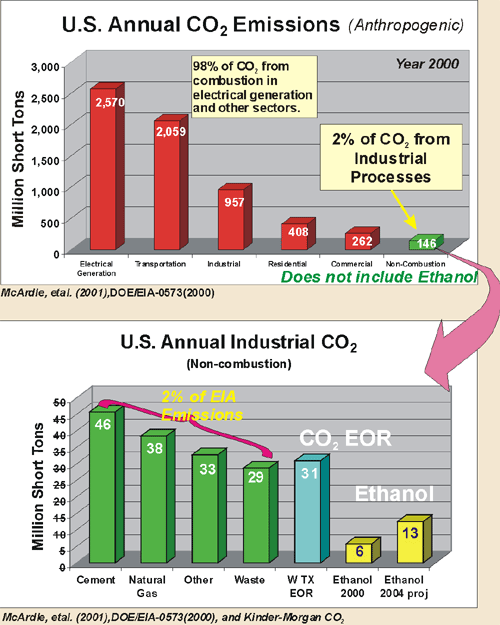
Model for Environmentally and Economically Sound Linked Energy Systems
Kansas Geological Survey
Open-file Report 2002-6

|
Model for Environmentally and Economically Sound Linked Energy Systems |
Kansas Geological Survey Open-file Report 2002-6 |
Ethanol CO2 emission volumes are low relative to total US anthropogenic CO2 volumes but become relevant when compared to volumes emitted strictly by industrial processes not directly related to combustion for energy. CO2 from ethanol production is not considered an emission due to its biomass source.

| Annual Production | MMB/yr |
|
|
| U.S. Ethanol (2001) | 42.1 | ||
| U.S. Ethanol Projected (2004) | 90.5 | ||
| Kansas Ethanol (2002 projected) | 2.0 | ||
| Kansas Oil (2000) | 34.3 | ||
| U.S. Oil (2000) | 2,130.7 | ||
| West Texas CO2 EOR (2001) | 54.8 | ||
| Potential EOR from Ethanol CO2 | BO/5mcf | ||
| Ethanol (2001) | 20.2 | ||
| Ethanol Projected (2004) | 43.4 | ||
| Incremental CO2 (2004-2001) | 23.1 |
|
|
e-mail : webadmin@kgs.ku.edu
Last updated March 2002
http://www.kgs.ku.edu/PRS/Poster/2002/2002-6/P2-03.html